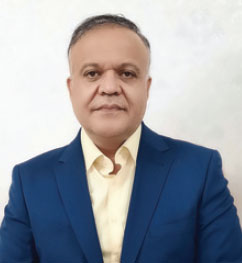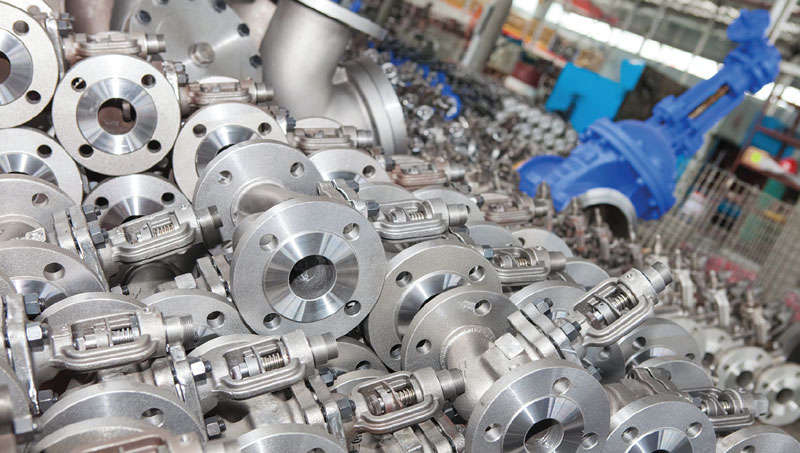AM program for the operation period of industrial valves
By Mr. Alireza Aslarabi Sardroudi
In his latest column, Mr. Alireza Aslarabi Sardoudi focuses on topics to be considered during valve operation in service facilities and infrastructure.
In previous articles, we defined the life cycle of an asset and its generalities. We also explained the issue of manufacturing valves in the factory with the asset management model. Also, how to select an industrial valve and related issues in industrial projects or infrastructure facilities were discussed using the asset management model. Obviously, after the installation phase, we will enter the operation phase. It remains to be seen how asset management will help the proper and standard operation of an industrial valve after the completion of the installation project.
After completion of the installation project, the following five areas are all important issues that should be considered during the operation of industrial valves in service facilities and infrastructure.
- Standard operating procedures (SOPs)
Operating procedures are the same as those prepared during project implementation
and usually include four main categories: operating procedures, maintenance and repair procedures, inspection procedures, technical and safety procedures. These procedures are used as a standard on a site, i.e. all operation and maintenance activities are performed according to the standards specified by the procedures. During this period, the operators must check that the procedures prepared in the project are sufficient for the operation operations. It depends on the experience of the users to make sure that the valves will work in the facility in standard mode. Operators based on SOPs should also provide log sheets to record the necessary data to show that the operating conditions of the valves are in accordance with the procedures at the time of operation, which is a key step in implementing SOPs. The first training program for managers, bosses, experts and workers is prepared and implemented based on these SOPs. Without SOPs, training will be poor and may not be tailored to the actual needs of the valves. It is important to update SOPs based on new events and requests. In other words, these SOPs are constantly monitored to match the conditions of the valves in the facility. - Utilization
This is an important concept in the operation period that refers to the purpose of installing an industrial valve in a site. This concept does not mean actual performance but rather the maximum possible performance of the valve based on the site’s engineering design. In other words, if we use an industrial valve at half capacity, we get only half its value, while the definition of asset management is to reach the maximum value of assets. Maximum use of the capacity of an industrial valve during operation is completely dependent on the amount of liquid or gas passing through it, ie our valves must be prepared and reliable to achieve maximum rate passaging. To achieve maximum valve performance, a comparison between the design specifications and the actual working specifications should be made, and if there is a large difference, it should be re-examined until the design capacity is close to the actual capacity. The length of operation should also be taken into account. - Healths (valves, site, and humans)
Health is a familiar concept during the exploitation period and is usually the opposite of risk. That is, if we have a small risk in a valve, it can be considered that the health of that valve is high. But this health is examined in three areas: First, the health of the valve itself means that we must be careful not to endanger the valve itself. Second, the health of the site where the valve is located, ie the place of use of the valve must be safe from any possible danger. Third are the risks to the operator or repairman when working with valves. Leakage of hot or toxic substances from the valves is very dangerous for employees. Therefore, in addition to constantly trying to prevent a dangerous event from happening, also train people to recognize the dangers and be able to save themselves in the event of an incident. The health of a valve is defined in its life cycle, meaning that a valve must behave like it was at the time of installation and like a new valve with a low risk of failure or safety hazards, that is, maintain its health continuously. Obviously, as the life of a valve increases, its risks increase and as a result, its health decreases. Therefore, in order to reduce the risks at any time, special action must be taken in accordance with those conditions, in order to maintain health, even at a desirable level. Daily review of valve operating conditions, incident logging and root cause analysis (RCA) and application of maintenance and technical inspection policies such as reliability center maintenance (RCM) and risk base inspection (RBI) is a necessity in this time. - Costs
Cost control is one of the most important pillars of asset management for the period of operation. These costs are usually considered in two parts: direct costs and indirect costs. Direct costs are costs that are necessary for the operation and maintenance of a valve, such as the cost of spare parts, consumables, repairs and technical inspection, and so on. Indirect costs are costs that result from the failure of valves, such as loss of production or reduction, atmospheric and environmental pollution, damage to manpower, or hazards such as fires, which could discredit a company’s reputation. Operators always try not to exceed the standard rate of the industry, and this is usually a difficult task. - Energy
In modern asset management systems, the issue of energy and strategies for energy management are highly emphasized. According to the energy management plan of a site, we firstly make sure that valves do not have energy losses and secondly we look to optimize the valves’ energy consumption. In the energy management of the valve assets, the operators should daily monitor valves for any leaks of steam and hot materials and also check the body temperatures as a way to ensure appropriate thermal insulation of valves. At the same time the engineering departments should monitor the energy losses of valves, taking appropriate action to correct or replace them.
Conclusion
The operation period in industrial valves is a very important and long period. During this period, operators must provide the necessary SOPs and strive for maximum efficiency, maximum health and optimal cost. Also, the issue of energy management and consumption reduction and replacement with low-energy valves will be on the agenda.
To be continued…….
 About the author
About the author
Mr. Alireza Aslarabi Sardroudi is an expert In physical asset management. Based in Tehran, Iran, Mr. Sardroudi can be reached on: aslearabi@yahoo.com
Mr. Sardroudi has planned seven articles about asset management of valves, as follows:
1: Introduction and overview
2: Requirements of an asset management system for valves
3: Asset management plan for the manufacture of valves
4: Asset management plan for engineering, design and installation
5: Asset management plan for valves during operation
6: Asset management plan for decommissioning valves
7: Valve asset management assessment and auditing


